29 Fascinating Facts About Lizards You Should Know

Lizards are a diverse and remarkable group of reptiles found all over the world. With over 6,000 known species, they come in a huge variety of shapes, sizes, colors, and adaptations.
Here are 29 fascinating facts to help you learn all about these cold-blooded creatures:
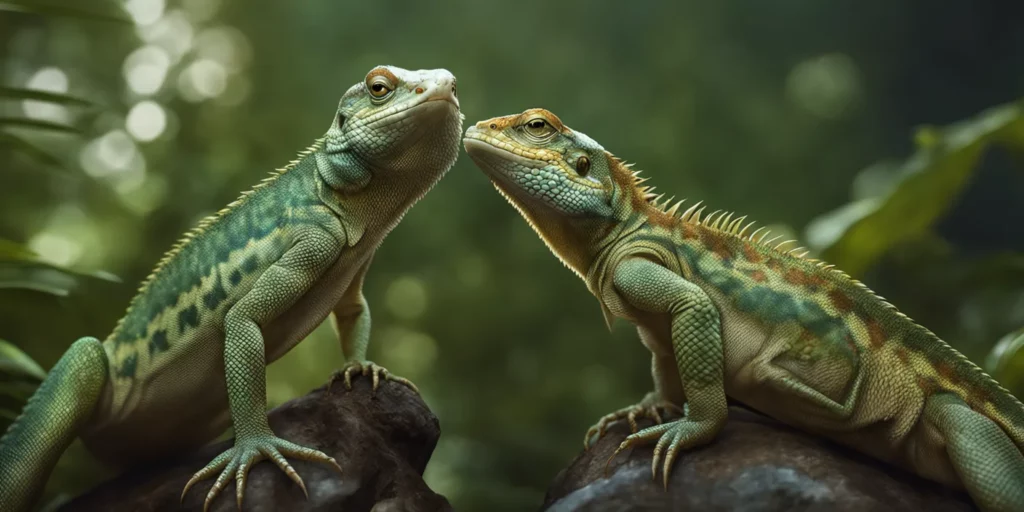
1. There Are Over 6,000 Lizards Species Worldwide
The first key fact about lizards is that there are a lot of them!
Recent research has identified over 6,000 lizard species globally across families like geckos, iguanas, monitors, chameleons and more. This makes them one of the most diverse groups of vertebrates on the planet.
New species are still being discovered every year, especially in tropical regions which are lizard hotspots. As our scientific knowledge grows, researchers estimate the total number of lizard species could be over 10,000!
2. Lizards Belong to the Order Squamata
Lizards belong to the scientific order Squamata. This group also includes snakes.
Squamates are characterized by having scaly skin. The key difference between lizards and snakes is that lizards have moveable eyelids while snakes don’t have any eyelids at all.
There are around 10,000 species combined of lizards and snakes making Squamates the largest order of reptiles.
3. Their Skin is Covered in Protective Scales
A defining feature of lizards is their tough scaly skin. It is made up of many small horny plates known as scales that overlay the skin surface.
These scales grow from the deeper dermal layer of the skin and provide protection from physical damage, water loss and sunburn. The scales are produced by specialized scale-forming cells called osteoderms.
The shape and size of scales varies greatly between lizard species. They come in different colors like brown, green, grey or orange to help lizards camouflage.
4. Most Have 4 Legs and External Ear Openings

Most lizards have a fairly uniform body plan. They have 4 legs (tetrapods), a long tail, movable eyelids and external ear openings (unlike snakes).
However, there are some exceptions. Legless lizards like glass lizards have greatly reduced or absent legs. And monitor lizards and some geckos have only internal ear openings.
5. Lizards Come in Many Shapes, Sizes and Colors
One of the coolest facts about lizards is just how much they vary in size, shape and coloration. Some key examples:
- Smallest: The tiny dwarf gecko grows up to only 1.6 inches long!
- Largest: The enormous Komodo dragon can reach over 10 feet long.
- Spikiest: Thorny devils are covered in conical spikes.
- Longest: The two-headed snake lizard has a snake-like body up to 30 inches long.
- Brightest: Male anoles have bright dewlaps to attract mates.
- Dullest: The horned lizard is perfectly camouflaged to blend into the desert floor.
- Weirdest: The flat-tailed horned lizard squirts blood from its eyes!
6. Chameleons Can Change Color Using Specialized Skin Cells
Chameleons are famous for their remarkable color changing abilities. So how exactly do they do it?
It’s all thanks to specialized skin cells called chromatophores that contain pigments of red, yellow, brown and blue. By expanding or contracting these pigments, chameleons can mix up colors to match their surroundings as camouflage or communicate.
Changes in hormones and neuron signals initiate this rapid color change effect within seconds. It helps chameleons regulate temperature and mood too!
7. The Jesus Christ Lizard Can Literally Run on Water
One of the most incredible facts about lizards is that the basilisk or “Jesus Christ” lizard can literally sprint across the surface of water!
To achieve this, they run upright on their strong hind legs and large webbed feet. They can skim across the water at up to 5 feet per second to escape predators.
The water’s surface tension and slapping momentum keep it from sinking. Small rearward foot motions also create air pockets that prevent sinking.
8. Monitor Lizards Have Venom Glands
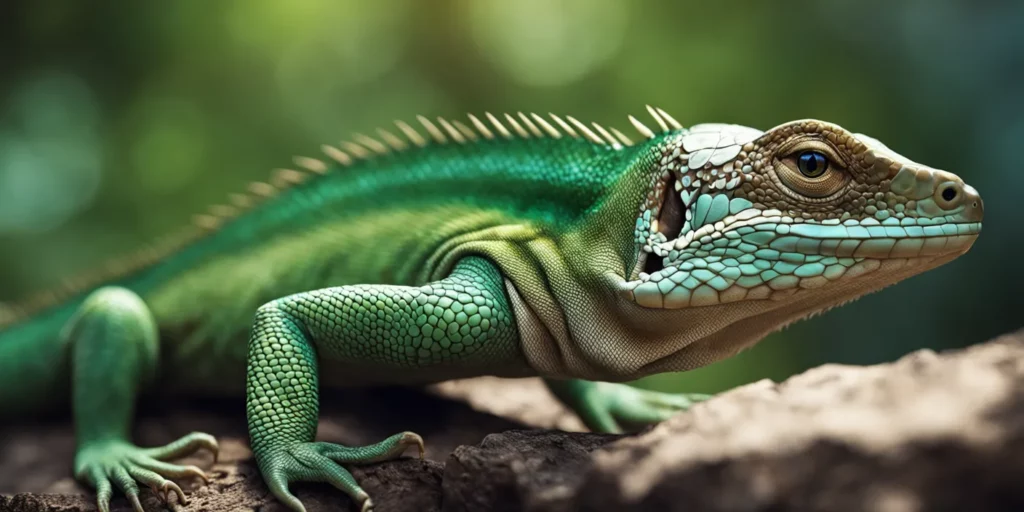
Many people don’t realize this, but monitor lizards like the Komodo dragon actually have venom. They are the last known venomous lizards.
Monitor lizards have venom glands loaded with anticoagulant toxins. When they bite prey, these toxins quickly induce shock and loss of blood. Even a dragon’s hissing mouth likely spreads venom droplets.
Researchers recently discovered that lace monitors and other monitor species also produce similar venoms, once thought unique to the Komodo.
9. Most Lizards Have Excellent Eyesight for Hunting
Lizards rely heavily on their vision to hunt for prey and watch for predators in their surroundings. Most species have excellent eyesight with precise color vision and depth perception.
Some lizards like the collared lizard even have a third “pineal eye” on the top of their head. This parietal eye can’t see images but detects changes in light that warns the lizard of passing predators.
10. Blue-Tongued Skinks Get Their Name From Bright Blue Tongues
The blue-tongued skink is a large lizard known for its most notable feature – its vivid blue tongue!
When threatened, they open their mouths wide and hiss to reveal the bright blue tongue as a warning signal. This startles predators and helps scare them off.
The blue color comes from a specialized pigment cell called a chromatophore that contains blue pigmentation. Some species also have strikingly orange tongues.
11. Lizards Regularly Shed Their Skin Through Molting
Lizards regularly shed and replace their skin throughout their life in a process called molting or ecdysis.
The molting process begins as a new layer of skin forms underneath the old one. The skin then detaches at the mouth and the lizard crawls out of this old skin casing, turning it inside out.
Molting helps lizards get rid of parasites, aids in repair and growth, and helps refresh their appearance. The frequency varies by species, age, habitat and food availability.
12. Most Lizards Are Carnivores That Feast on Insects, Spiders and Small Vertebrates
The majority of lizards are carnivorous, feeding on a diet of live prey like insects, spiders, worms, snails and small vertebrates.
Their sharp teeth and strong jaws allow them to capture and crush this prey. Large lizards may eat frogs, snakes, birds and even small mammals.
Different lizard species have diverse specialized diets – for example, some iguanas feed only on vegetation while Gila monsters prefer eggs.
13. Large Lizards Like Iguanas Have Teeth Adapted For Chewing Plants
While small lizards tend to be insectivores, large lizard species like iguanas and monitor lizards are primarily herbivores.
These lizards have stout teeth and wide jaws adapted to shred and chew fibrous plant material like leaves, fruits, flowers and seeds. The Komodo dragon even has serrated teeth like a steak knife for cutting vegetation.
Their digestive systems contain gut flora that help them ferment and digest this plant diet which would be difficult for other lizards to fully break down.
14. Geckos Have Specialized Toe Pads That Allow Them to Climb Any Surface
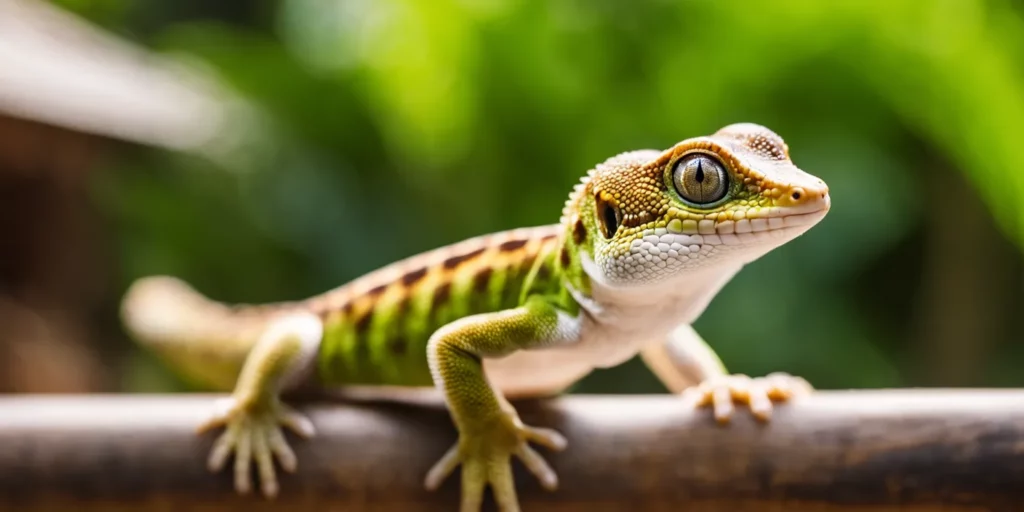
Geckos have an amazing ability to scurry up smooth surfaces like glass and even hang upside down. So how do they achieve this spider-like sticking power?
It’s thanks to specialized toe pads covered in thousands of microscopic hairs called setae. These tiny hairs split and flattened at the tips, creating van der Waals forces and electrostatic attractions between the hairs and the surface.
This along with sticky secretions allows geckos to dexterously climb.
15. Chameleons and Geckos Use Their Tail Like a Fifth Hand
Some lizards like chameleons and geckos have highly flexible prehensile tails that function like an extra grasping hand or claw.
They can wrap this tail securely around branches and other objects to give them greater clinging and gripping ability as they climb through trees and vegetation.
The tail also acts as a safety anchor in case they fall or lose grip, helping keep them stable in their arboreal habitat.
16. Male Lizards Battle for Territory and Mates During Breeding Season
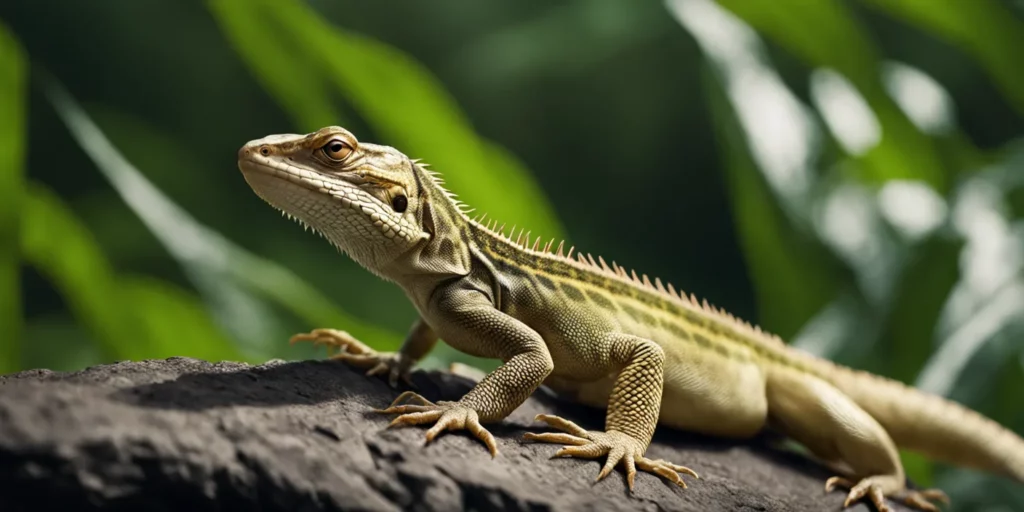
When breeding season arrives, male lizards become highly territorial and competitive as they try to secure both territory and access to female mates.
Rival males will confront each other with aggressive displays and fighting. They may bob their heads, do push-ups, lash their tails or posture to intimidate competitors.
Injuries from fighting are common. But retaining territory and mating ensures they pass on their genes, making it a necessary risk.
17. Most Lizards Lay Soft Shelled Leathery Eggs
Reptiles have evolved many reproductive strategies. Most lizards are oviparous – they lay external eggs.
These eggs are soft-shelled and leathery rather than hard shells. The mother lays them in underground nests, holes or concealed protected spots. This protects the eggs but ensures the location has the right temperature and moisture for incubation.
Depending on the species, clutch sizes range from just 1-2 eggs to over 50! The eggs then hatch after an incubation period of 4-12 weeks in most species.
18. Some Lizards Will Protect Their Eggs and Even Hatchlings
While many lizards lay their eggs and move on, some species have evolved to exhibit more protective parental care.
The striking red-headed rock agama will coil around its eggs to shield them from predators and prevent moisture loss. Horned lizards and some skinks also remain near the nest area and actively defend their eggs.
In a few rare species, the mother will stay with newly hatched young for the first few weeks until they can actively forage, providing a higher chance of survival.
19. Lizards Bask in the Sun to Raise Their Body Temperature
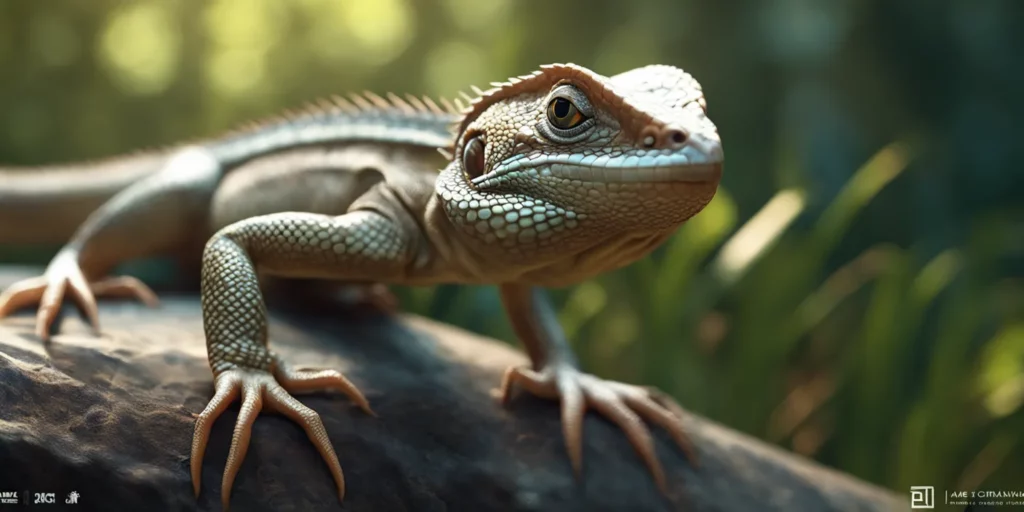
As cold-blooded reptiles, lizards rely on external heat to regulate their body temperature and metabolism.
Basking under the sun allows lizards to absorb heat and warmth which raises their core body temperature. This kickstarts their digestion, speed, reflexes and other bodily functions.
The optimal body temperature for most lizards ranges from 85-95°F but can vary significantly based on the species and habitat. Achieving an ideal temperature is key for their health and survival.
20. Blood Circulation Allows Safe Sun Basking
While sun basking is vital, overheating can also be dangerous for lizards. So how do they prevent cooking themselves?
Special blood circulation adaptations like the renal portal system allow lizards to minimize blood flow to their core organs when they get too hot. This crucial mechanism prevents brain and organ damage while basking.
By diverting blood flow to peripheral tissue like the skin, excess heat can radiate outwards rather than continue rising internally to lethal levels.
21. Lizards Become Sluggish and Inactive at Night Due to Lower Body Temperatures
Since lizards depend on external heat sources, what happens to their metabolism when the sun goes down?
Being cold-blooded, lizards become largely sluggish, relatively inactive and much slower nocturnally when temperatures drop. Digestion and other bodily processes grind to a halt.
This is because their lowered core body temperature at night impairs neuromuscular functioning. So most lizards simply sleep through the cooler nighttime hours to conserve energy.
22. Desert Lizards Estivate Underground to Escape Scorching Heat
For lizards living in extreme desert environments, days can be unbearably hot while nights are frigid cold. How do they cope?
Desert specialists like the Gila monster have adapted to estivate – a period of extended torpor in underground burrows or rock crevices. By lowering their metabolic rate by 50-60%, they minimize water loss and avoid overheating.
Once outside temperatures become more tolerable in early autumn, desert lizards will emerge hungry and ready to replenish themselves before winter arrives.
23. Lizards Hibernate Over Winter When Food is Scarce
As temperatures plummet in winter, lizards have a different challenge – how to cope with the cold. Lizards rely on hibernation to make it through.
By retreating deep into crevices, burrows or holes, lizards can escape freezing conditions by effectively “sleeping” through the winter months. Their metabolism slows to near standstill.
This prevents them wasting energy hunting when prey is already scarce. They tap fat reserves to survive until spring brings warmth and plentiful food again.
24. Lizards Use Body Language and Chemical Signals to Communicate
From head bobbing to push-ups to tail whips, lizards have an elaborate body language they use to communicate with each other.
Dominant gestures like head bob displays convey aggression and establish territory. Rapid push-ups signal courtship and attraction. Arm waves and tail signals can send alarms.
Lizards also release pheromones from glands on their chin, thighs or tail to signal alarm, define territory or attract mates. Their communication is both visual and chemical.
25. Anole Lizards Use Dewlaps to Attract Mates and Warn Off Rivals

Male anole lizards have brightly colored throat fans called dewlaps used for communication and signaling during breeding season.
To catch a female’s eye, males extend these vibrant dewlaps while vigorously bobbing their head up and down. This eye-catching display advertises the male’s fitness.
At the same time, it also warns competing males in the vicinity to back off and signals possession of the territory to passersby. The dewlap is key in lizard language.
26. Some Lizards Can Lose Their Tail to Escape Predators
Some lizards have specially evolved to lose and detach their tail if grabbed or bitten by a predator. This helps them flee to safety.
The detached tail wriggles and writhes wildly which distracts the predator while the lizard makes its getaway. The lizard quickly regenerates a new cartilaginous tail over several weeks.
Tails are preferentially lost since they can be regrown, while total loss of limbs or other body parts would be far more devastating.
27. Horned Lizards Squirt Blood From Their Eyes to Deter Canine Predators
The aptly named horned lizard has a remarkable and unique defense mechanism – it actually squirts a directed stream of blood from its eyes when threatened!
This horrifying, gory display startles predators enough to give the horned lizard time to escape. The blood tastes foul and may inhibit the predator’s ability to smell its prey.
This unusual adaptation seems specially targeted to repel canine predators like wolves and coyotes that hunt using smell rather than sight.
28. Lizards Play Key Roles in Food Webs and Ecosystems
As predators of insects, spiders and rodents, lizards help control populations and prevent over-proliferation of these animals. This regulates ecosystem balance.
Lizards are also an important food source for many birds, snakes, and mammalian predators, providing nourishment higher up the food chain.
Loss of lizards can cause disruptions, underlining their vital role in healthy habitats. Species like the Komodo dragon are even apex predators at the top of their food chains.
29. Climate Change and Habitat Loss Are Putting Lizards At Risk
Despite their long evolutionary history, lizard populations now face serious threats from human activities like:
- Habitat destruction reducing viable range
- Overcollection for the exotic pet trade
- Invasive species that outcompete or prey on lizards
- Disease spread and emergence of novel pathogens
- Climate change creating conditions lizards can’t adapt to fast enough
It’s estimated over 1 in 5 lizard species are threatened. Targeted conservation efforts are crucial to prevent irreparable biodiversity loss.
Key Takeaways: Core Facts About Lizards
- There are over 6,000 lizard species globally across diverse forms like geckos, iguanas, and chameleons.
- Lizards belong to the order Squamata along with snakes. Key differences are movable eyelids and external ear openings.
- Their scaly skin helps prevent water loss and physical damage. Large plates called osteoderms produce the scales.
- Most have 4 legs and tails, but some species like glass lizards are legless.
- They occupy an incredible variety of ecological niches and exhibit amazing adaptations like color-changing skin, running on water and detaching their tails.
- Vision is their dominant sense used for hunting, navigating and detecting threats.
- Small lizards tend to be insectivores while large species like iguanas eat plant material.
- Special toe pads allow geckos to climb any surface. Chameleons use their tail as a fifth grasping hand.
- Males fight over territory and mates during breeding season. Females lay soft-shelled leathery eggs in concealed spots.
- Being cold-blooded, they rely on heat sources like sun basking to power their metabolism.
- Hibernation and estivation help lizards survive temperature extremes of winter and summer/drought.
- Threats from climate change, habitat loss and overcollection are putting many lizard species at increasing risk.
Lizards are truly astonishing creatures. Their incredible diversity, bizarre adaptations and key ecosystem roles make them endlessly fascinating. I hope these 29 facts shed new light on the wonderful world of lizards! Let me know if you have any other cool lizard facts to add.
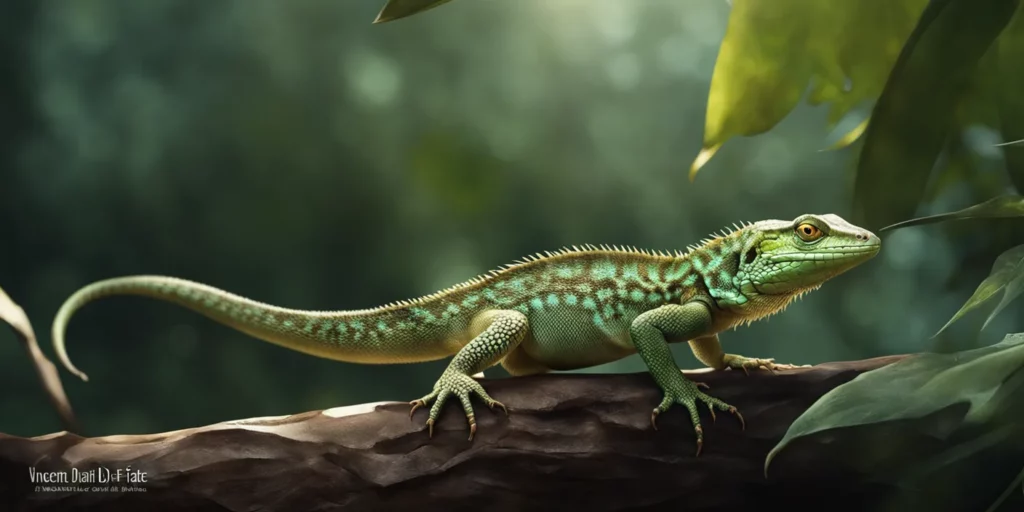
FAQ





